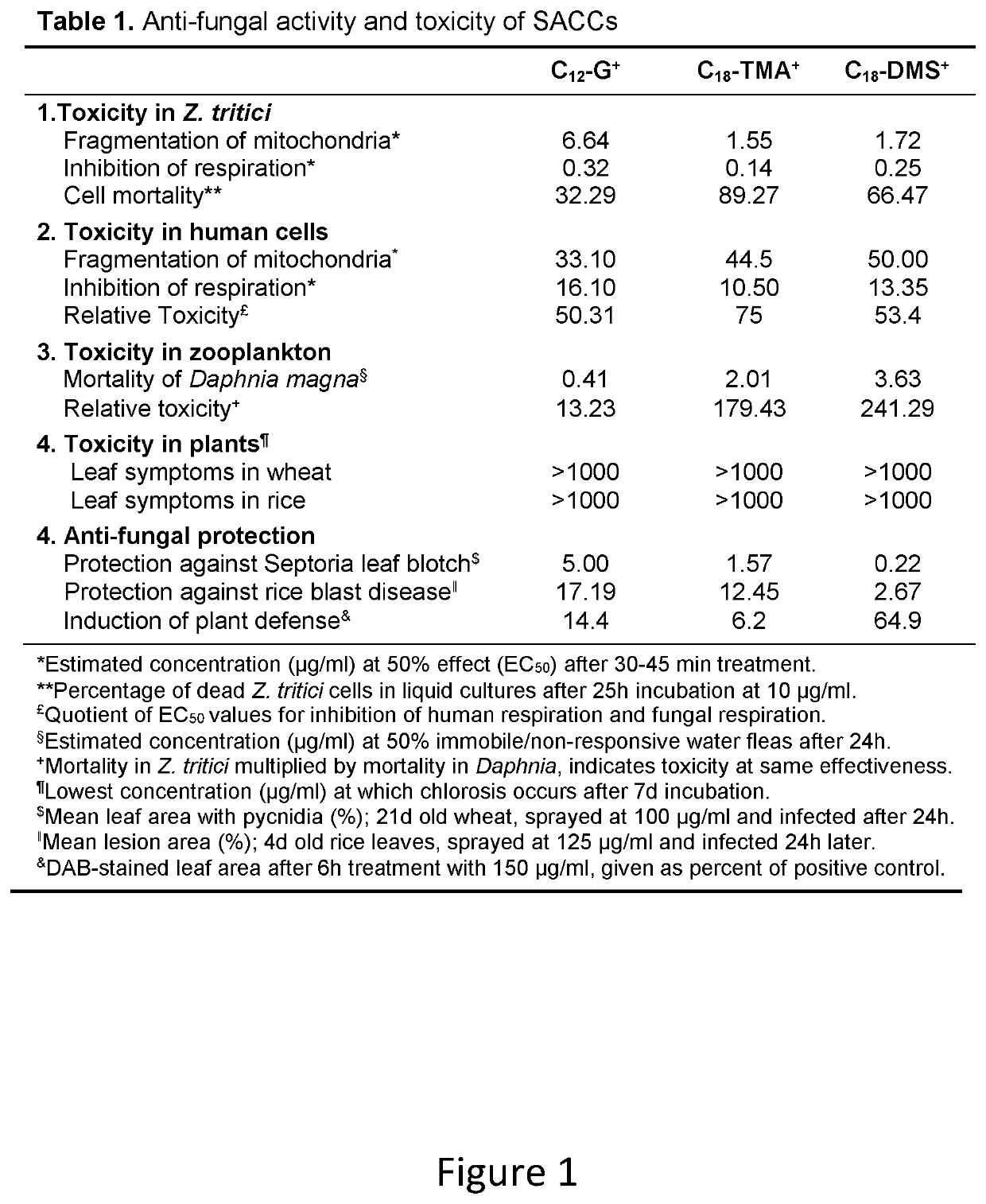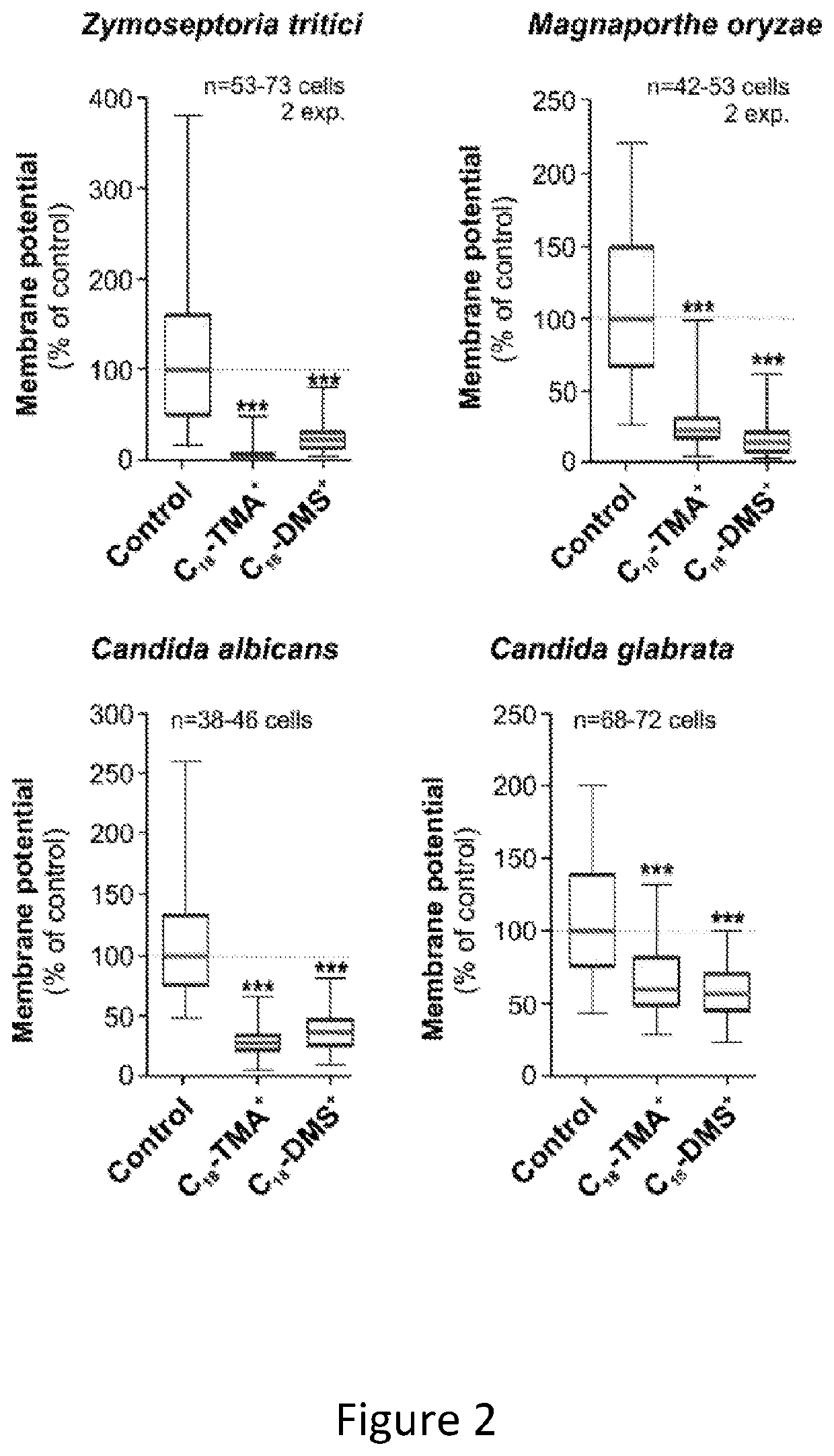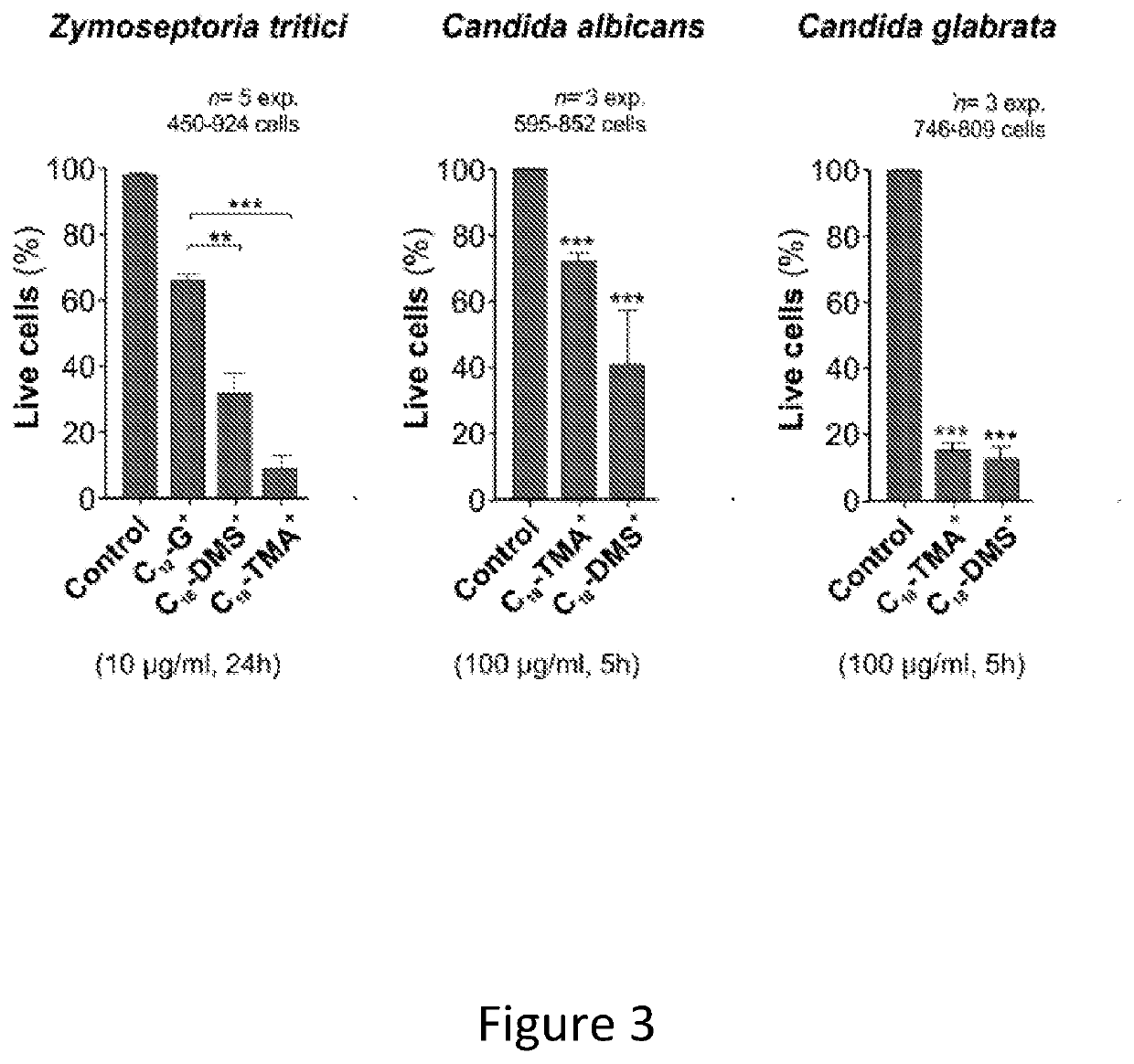Antifungal Compositions
a technology of compositions and compositions, applied in the field of antifungal compositions, can solve the problems of increasing the greatest biotic challenge, and the rate of emergence of fungicide resistance outpacing the rate of antifungal discovery, so as to improve the performance of antifungal compounds, reduce the surface tension, and increase the deposition of agrichemical sprays
- Summary
- Abstract
- Description
- Claims
- Application Information
AI Technical Summary
Benefits of technology
Problems solved by technology
Method used
Image
Examples
Embodiment Construction
[0131]In order that the invention may be more clearly understood, embodiments thereof will now be described, by way of example only, with reference to the accompanying drawings of which:
[0132]FIG. 1 is a table (Table 1) illustrating the relative efficacies of C12-G+, C18-TMA+ and C18-DMS+ in relation to antifungal activity and toxicity for two fungal infections of plants (Z. tritici on wheat and M. oryzae on rice);
[0133]FIG. 2 comprise 4 graphs showing the inhibitory effect of the SACCs C18-TMA+ and C18-DMS+ on the mitochondrial potential in two plant pathogenic and two human pathogenic fungi.
[0134]FIG. 3 comprises 3 graphs summarizing the results from LIVE / DEAD staining experiments that were used to assess the mortality of C18-TMA+ and C18-DMS+ in one plant pathogenic fungus, causing Septoria tritici blotch and two Candida species that cause infectious diseases in humans.
[0135]FIG. 4 is a graph illustrating the additional mode of action (mitochondrial reactive oxygen species genera...
PUM
| Property | Measurement | Unit |
|---|---|---|
| concentration | aaaaa | aaaaa |
| concentration | aaaaa | aaaaa |
| concentration | aaaaa | aaaaa |
Abstract
Description
Claims
Application Information
 Login to View More
Login to View More - R&D
- Intellectual Property
- Life Sciences
- Materials
- Tech Scout
- Unparalleled Data Quality
- Higher Quality Content
- 60% Fewer Hallucinations
Browse by: Latest US Patents, China's latest patents, Technical Efficacy Thesaurus, Application Domain, Technology Topic, Popular Technical Reports.
© 2025 PatSnap. All rights reserved.Legal|Privacy policy|Modern Slavery Act Transparency Statement|Sitemap|About US| Contact US: help@patsnap.com



